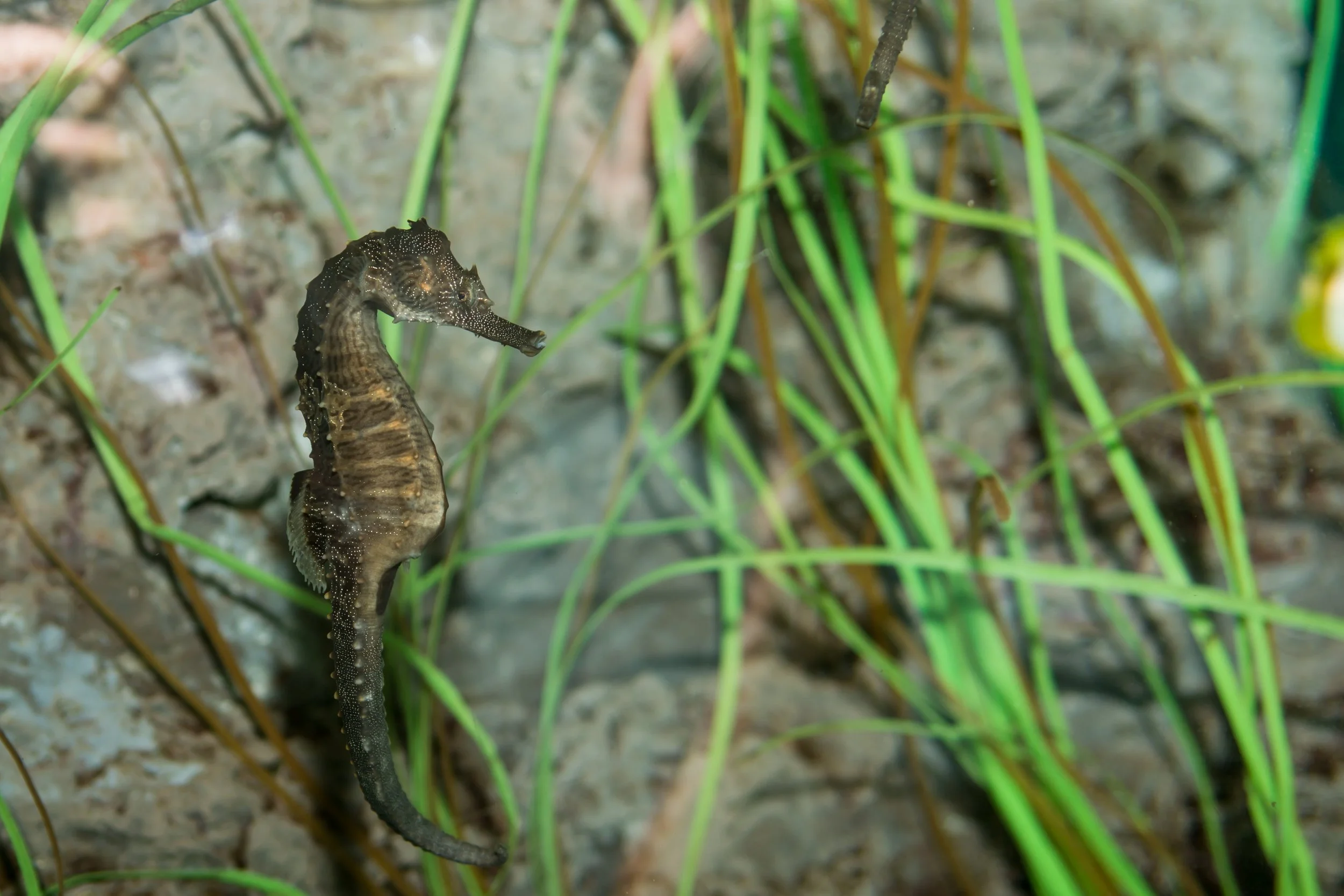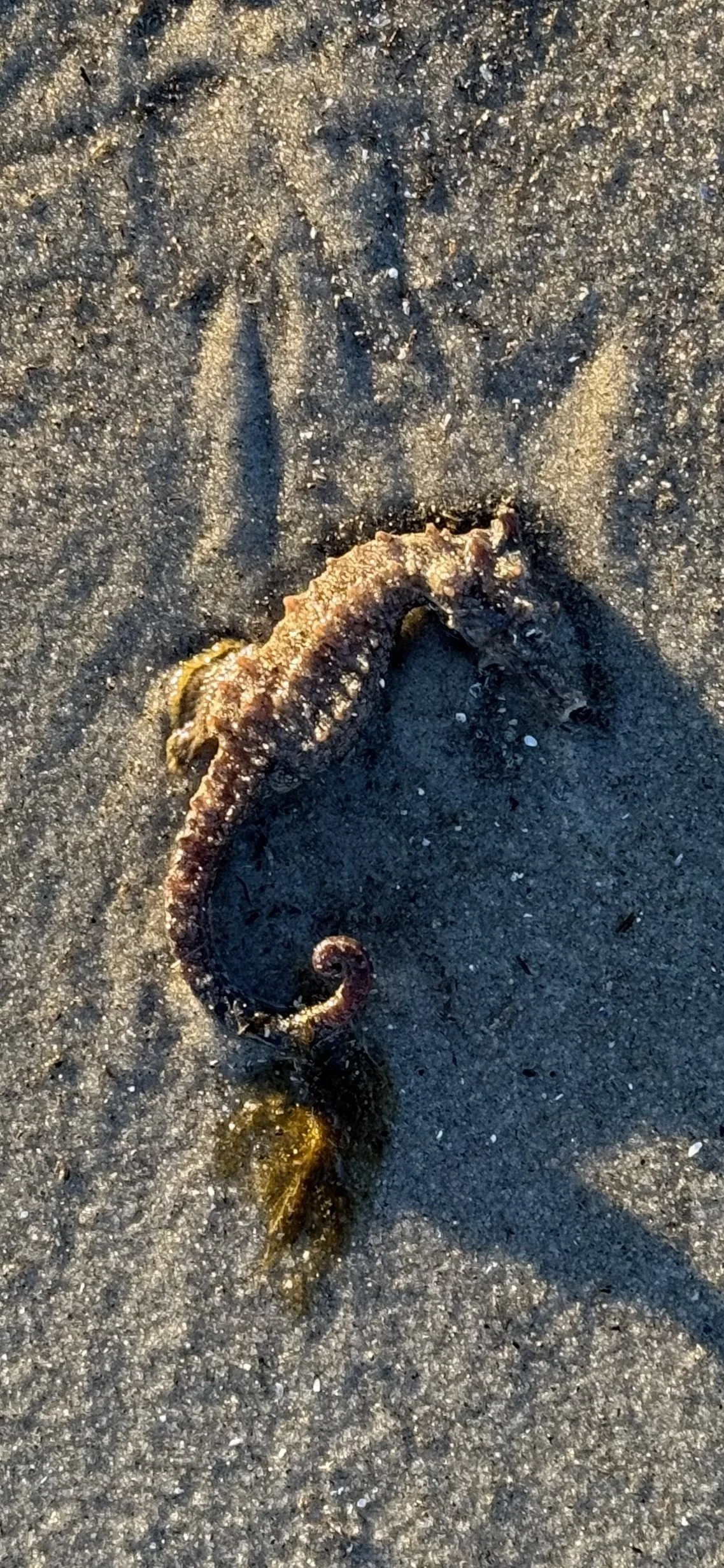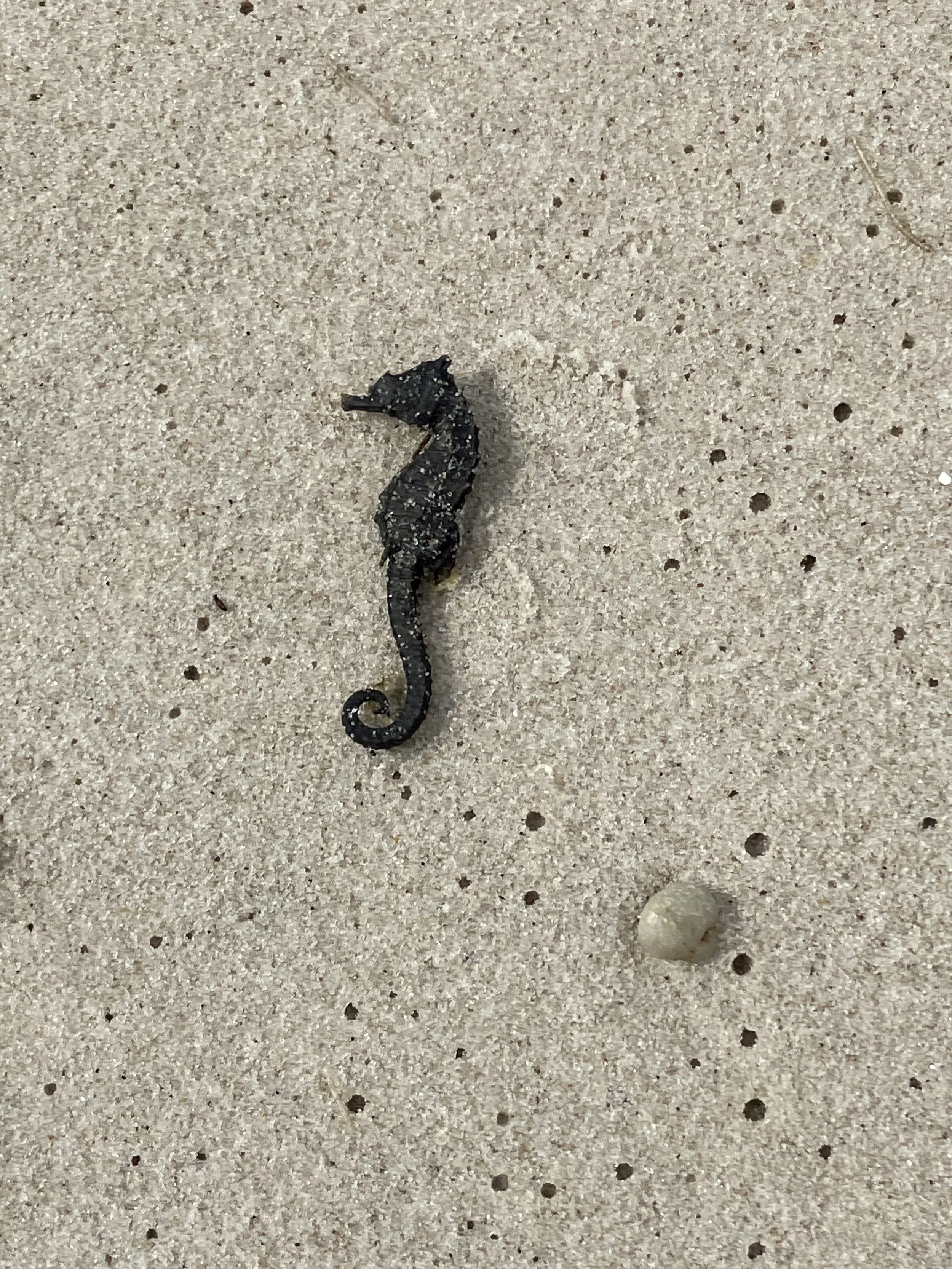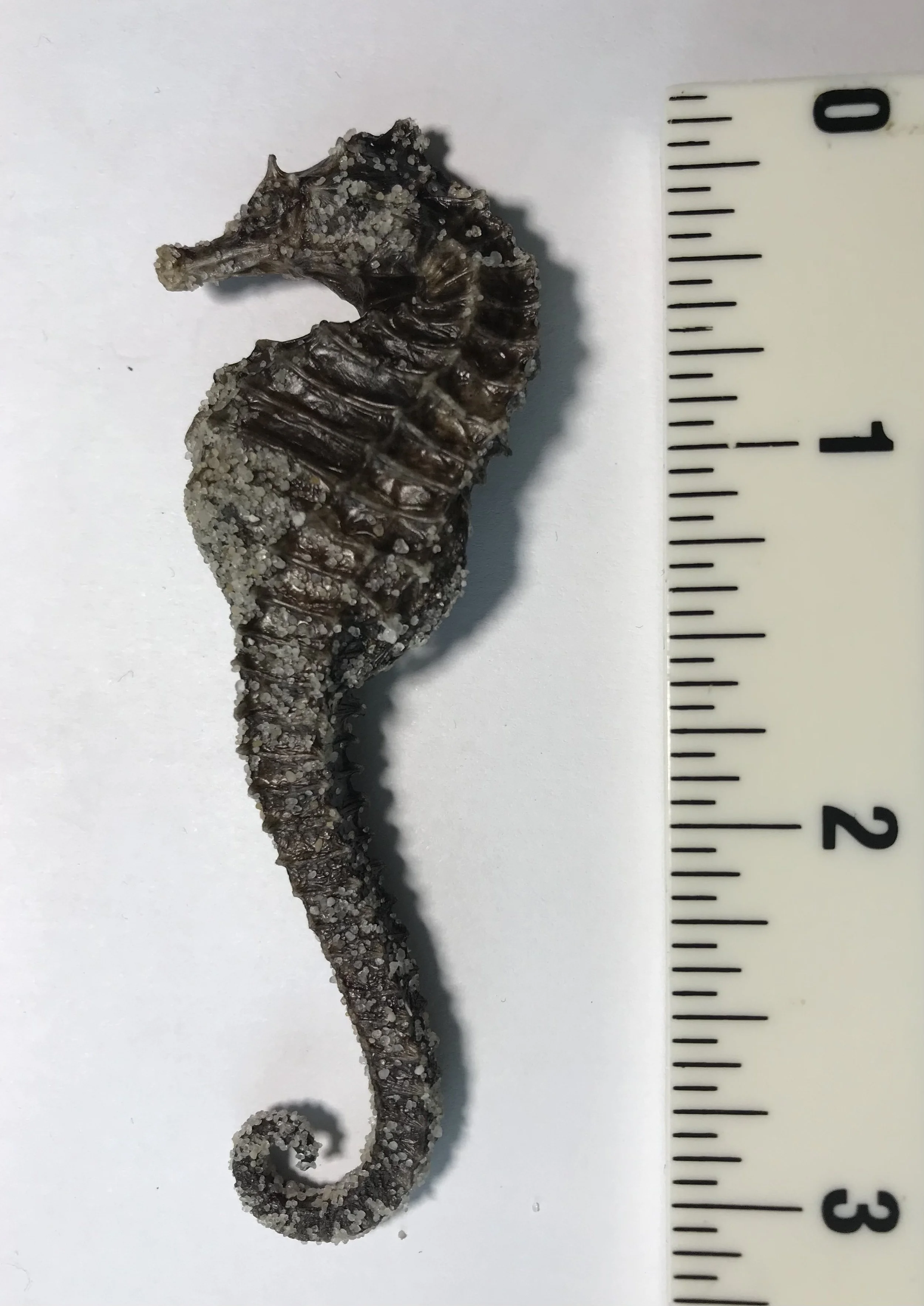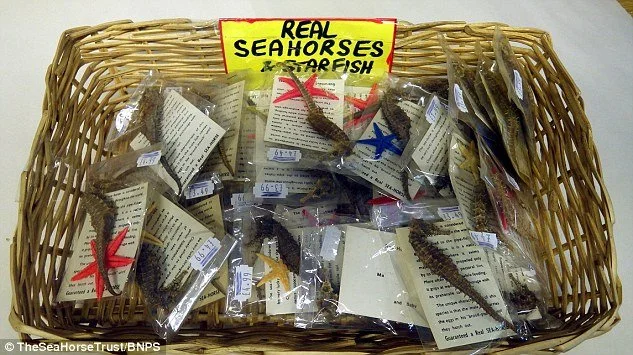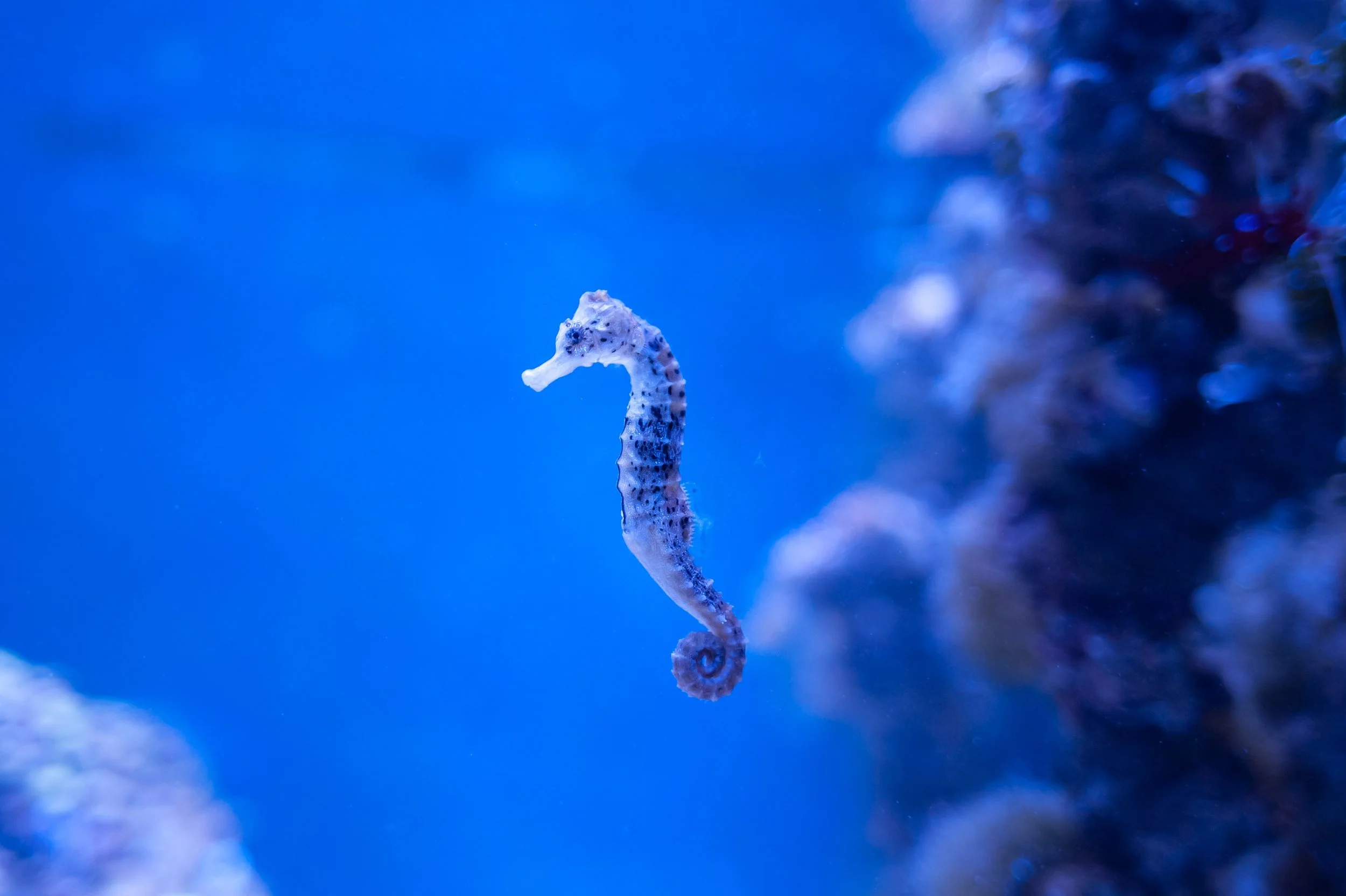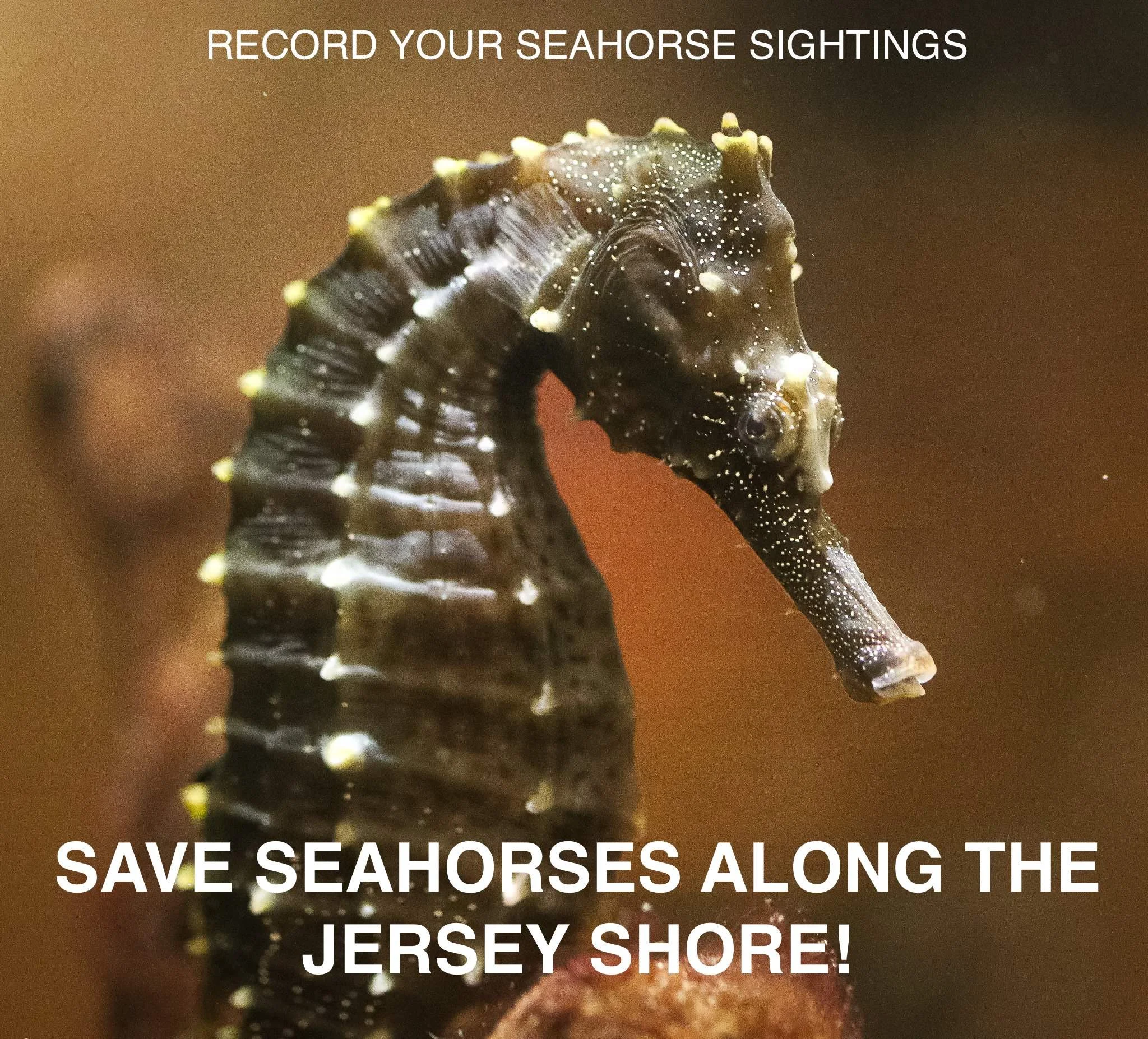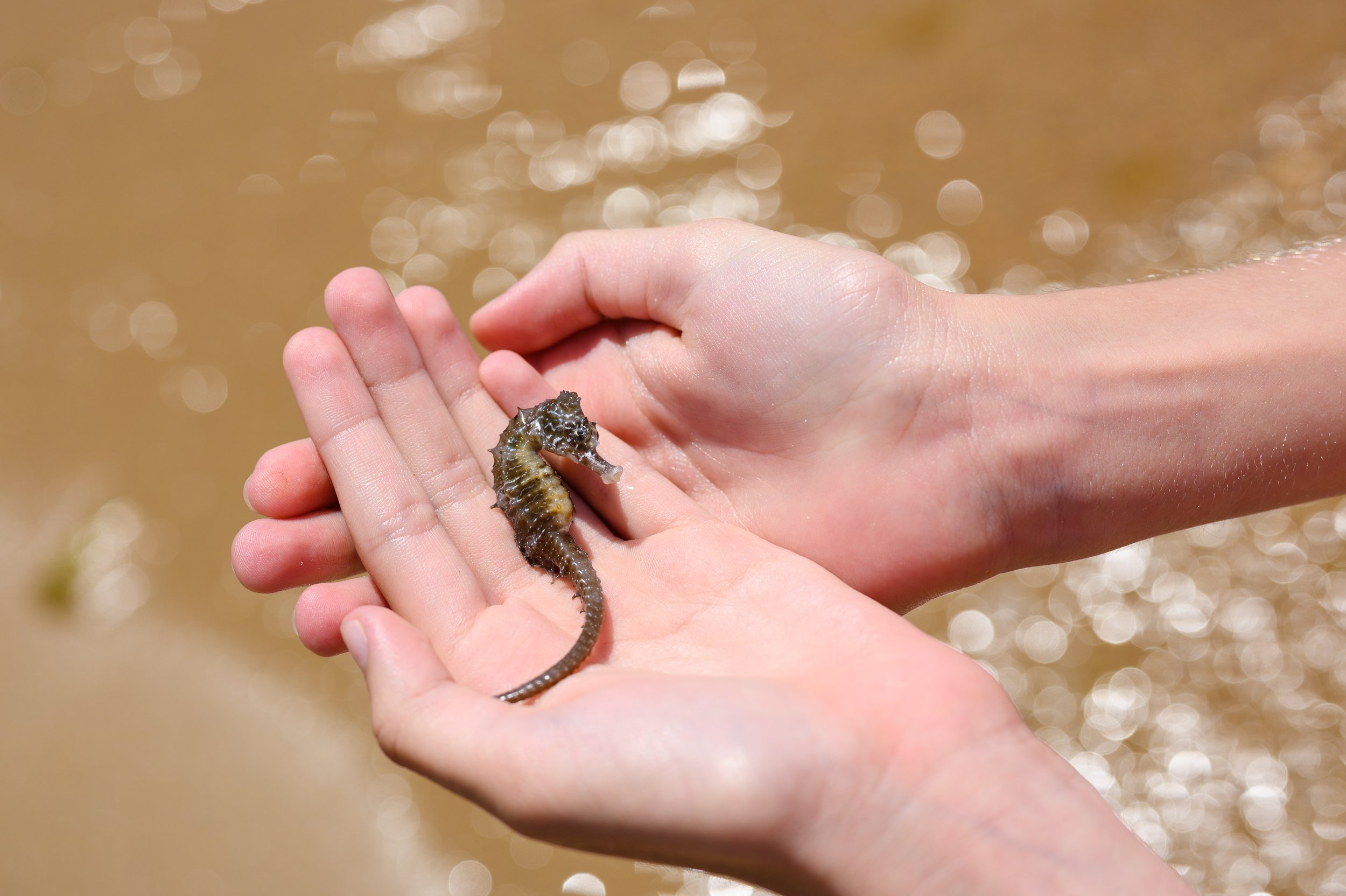
Save Seahorses: Report Your Sightings!
We know very little about the population of seahorses around New Jersey and New York!
Understanding seahorses is crucial to the protection and conservation of this unique and beautiful fish.
The more we know, the more we can do to protect them.
If you come upon a seahorse (live or dead), please record your sighting to Save Coastal Wildlife so we may keep track of the location, and abundance of seahorses.
The Northern lined seahorse (Hippocampus erectus) is the only native seahorse along the Jersey Shore.
Unfortunately, the population of Northern lined seahorses is poorly known in New Jersey and New York.
Although the lined seahorse is not considered federally or internationally threatened or endangered at this time, they are protected under Appendix II of CITIES (as are all seahorse species) due to the loss of habitat and pollution in their environment, and also due to the high aquarium and tourist trade globally for live and dead (dried) seahorses. These threats to seahorses go largely unregulated and are not properly managed under local fisheries organizations in New Jersey and New York.
There is also very little catch data from NJ Fish & Wildlife available for this species, making it difficult to determine trends. The State of New York does consider populations of the Northern lined seahorse to be on the decline.
The lined seahorse is listed by the World Conservation Union (IUCN) Red List as “Vulnerable” due primarily to indirect evidence that numbers are continuing to decline.
Population data for the Northern Lined seahorse species is sparse at best along the Jersey Shore, but what little information exists, scientists believe the population is threatened and in rapid decline.
The more information we collect about seahorses along the Jersey Shore the better situation we are in to raise awareness to protect and preserve our local seahorse population from a variety of threats including bycatch, climate change, and the pet and curio trade industries.
Have you discovered a dead, dying or live seahorse along the Jersey Shore?
Record it here!
WE NEED YOUR HELP TO GET MORE INFORMATION ABOUT SEAHORSES!
Insufficient data on local seahorse populations makes it difficult to assess their risk of loss and implement effective conservation measures.
Northern Lined Seashore Ecology
The Northern Lined Seashore (Hippocampus erectus) is the only native seahorse to be found along the Jersey Shore.
The Northern Lined Seahorse (Hippocampus erectus) inhabits shallow, protected coastal waters, relying on camouflage and clinging to vegetation like seagrass, mangroves, and sponges for survival and hunting small crustaceans and other marine life.
Habitat and Distribution:
Geographic Range:
Found in the western Atlantic Ocean, from Nova Scotia, Canada, down to Brazil, as well as throughout the Gulf of Mexico and the Caribbean Sea.
Preferred Habitats:
Shallow, protected waters with abundant aquatic vegetation, including seagrass beds, mangroves, coral reefs, and estuaries, and even floating sargassum.
Depth:
Occurs at depths from 2 to 230 feet (0.5 to 70 meters).
Camouflage:
They rely on their coloring and texture to camouflage themselves into their environment for protection from predators.
Poor Swimmers:
They are not strong swimmers and rely on their tails to hold onto seaweed and coral to prevent floating aimlessly in the water column.
Diet and Feeding:
Carnivorous:
They are carnivorous, feeding on small crustaceans, amphipods, and gastropods using their elongated snouts.
Ambush Predators:
They are ambush predators, hiding in coral, seagrass, and mangroves to catch their prey.
Constantly Eating:
Seahorses don't have stomachs, and their digestive systems process food so quickly that they must continually graze to survive.
Age & Growth
The maximum reported length of the lined seahorse is 7.5 inches (19.0 cm). Maturity is reached at lengths of 2.2-2.8 inches (5.6-7.0 cm) with males developing brood pouches at 5-7 months of age. The lifespan of this seahorse is approximately one year in length.
Reproduction: Males and females are monogamous, meaning they stay with the same mate for life. They go through an elaborate courtship ritual that includes the male became lighter in color and its brood pouch inflated. Prior to mating, the male and the female swam side by side and the male often touches a female's belly with his head. The tails of the male and female are often tangled together.
The female lays about 100 to 600 eggs (the exact number of eggs depends chiefly on her size) into the male’s brood pouch, where they are fertilized and incubate for approximately two to three weeks before hatching. Young seahorses, a small version of the adult, can swim independently. Juveniles are less than one-quarter of an inch long and quickly take on the habits of adult. Maturity is reached around 5-7 months of age.
After birth, courtship commences again between adults.

Threats to Seahorses Along the Jersey Shore!
The most severe threat to the lined seahorse population along the Jersey Shore is from non-selective fishing (by-catch) by commercial fishing activities.
The lined seahorse is found as bycatch in ocean trawl fisheries in New Jersey that catch fluke or summer flounder, crabs, dogfish, and other commercial species. Seahorses may also be accidentally caught in other non-selective fishing gear such as entangling nets, seine nets, or traps. Some of these seahorses caught as bycatch is then sold and exported for use in the traditional Chinese medicine trade or sold as souvenirs at tourist shops along the East Coast.
Fishermen can sell seahorses they find in their nets, which would otherwise be thrown back in the water. Local fishermen can make profit by selling seahorses to both local pet and curio markets or overseas markets to Asia for traditional Chinese medicine (TCM).
The global trade of dried seahorses exceeds 20 million per year, with the trade mainly moving through Thailand and the Philippines to Hong Kong, China, and Taiwan. Most seahorse species are protected around the world through the Convention on International Trade in Endangered Species (CITES), but this hasn't stopped the international trade. The average retail price for one dried seahorse is $20.00 USD.
Dead Seahorses sold for medicine in an Asian drugstore.
PET TRADE
The pet trade also takes an estimated one million seahorses from the wild. Many of those live seahorses taken are for the home-aquarium market and sold in local pet shops. Many will not survive more than six weeks. Seahorses require optimal water conditions to survive, which are not always possible to maintain in home aquariums. Captive lined seahorses are especially vulnerable to parasitic infections including microsporidians, including Glugea heraldi; a myxosporidian of the genus Sphaeromyxa; fungi; ciliates, including Uronema marinum; and nematodes.
THE CURIO TRADE
The curio trade, those natural mementos often sold at seaside tourist shops along the Jersey Shore, like dried seahorses, dried sea stars, dried pipefish, coral, sand dollars, shark jaws, and mollusk shells, can cause the death and destruction to millions of aquatic specimens every year, and a breakdown in the ecosystems where they live. About a million seahorses are caught each year globally for the curio trade. They are hung out alive in the sun to dry and then made into ornaments and tourist souvenirs. Although these natural items are frequently advertised as being “sustainable,” this is seldom — if ever — true. Seahorses and other sea creatures undergo similar fishing and drying practices as the destructive shark fin trade.
Habitat Degradation
Lined seahorses are threatened by habitat degradation from pollution, coastal development, and excess sedimentation and eutrophication. Loss of salt marsh and submerged aquatic vegetation beds from habitat degradation is also a threat, as well as invasive species (like Green Crabs and Asian Shore Crabs) and climate change that are creating more intense storms and rough surf for seahorses to swim.
Additionally, bottom trawling from commercial fishing activity can cause the destruction of coastal features, like sea grass beds and reefs, which can lead to seahorse habitat degradation.
Climate Change
Climate change, particularly ocean warming and acidification, poses a significant threat to seahorse populations, impacting their behavior, physiology, and survival, especially for early stages.
Impacts of Climate Change on Seahorses:
Ocean Warming:
Thermal Stress: Rising ocean temperatures can cause thermal stress in seahorses, leading to reduced growth rates, impaired immune function, and increased susceptibility to diseases.
Reproductive Disruption: Elevated temperatures can disrupt seahorse reproductive processes, leading to lower fecundity, decreased offspring survival, and ultimately, a decline in population sizes.
Metabolic Changes: Studies show that ocean warming increases oxygen consumption in seahorses, indicating significant metabolic stress.
Extreme Temperatures: Even small temperature increases can be detrimental.Seahorses exposed to temperatures higher than 28°C (82°F) showed signs of metabolic suppression, and some seahorses species died within hours when placed in 32°C (90°F) water.
Ocean Acidification:
Impact on Shells and Growth: Ocean acidification, caused by the absorption of atmospheric carbon dioxide, can negatively affect the growth and development of seahorses and their prey, potentially disrupting the food web.
Other Climate Change Related Stressors:
Hypoxia: Reduced oxygen levels in the water can also stress seahorses, particularly in shallow and coastal areas.
Extreme Weather Events: Climate change can lead to more frequent and severe storms and other extreme weather events, which can damage seahorse habitats and increase mortality.


